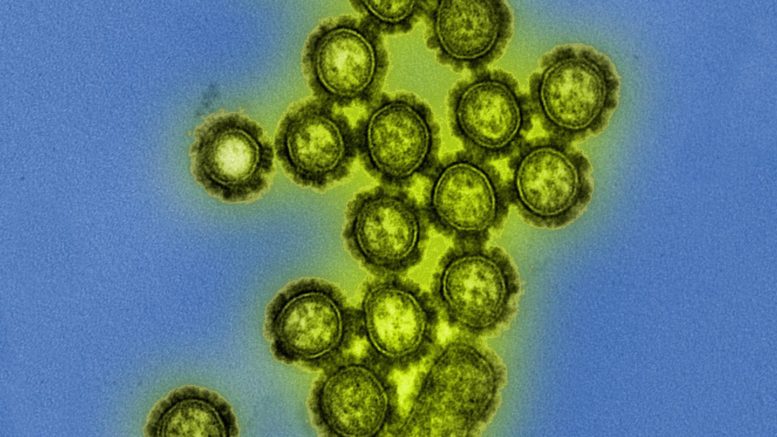In the United States, influenza activity decreased in March 2020, was historically low through the summer of 2020, and remained low during October 2020–May 2021 (<0.4%of respiratory specimens with positive test results for each week of the season). Circulation of other respiratory pathogens, including respiratory syncytial virus (RSV), common human coronaviruses (HCoVs) types OC43, NL63, 229E, and HKU1, and parainfluenza viruses (PIVs) types 1–4 also decreased in early 2020 and did not increase until spring 2021. Human metapneumovirus (HMPV) circulation decreased in March 2020 and remained low through May 2021. Respiratory adenovirus (RAdV) circulated at lower levels throughout 2020 and as of early May 2021. Rhinovirus and enterovirus (RV/EV) circulation decreased in March 2020, remained low until May 2020, and then increased to near pre-pandemic seasonal levels.
Olsen, et al. (2021) explain, "Circulation of respiratory viruses could resume at pre-pandemic levels after COVID-19 mitigation practices become less stringent. Clinicians should be aware of increases in some respiratory virus activity and remain vigilant for off-season increases. In addition to the use of everyday preventive actions, fall influenza vaccination campaigns are an important component of prevention as COVID-19 mitigation measures are relaxed and schools and workplaces resume in-person activities."
They add, "In the United States, the circulation of respiratory viruses was disrupted during the COVID-19 pandemic, but the magnitude, timing, and duration of this effect varied among viruses. During 2020, influenza viruses and RSV circulated at historically low levels. In 2021, influenza continues to circulate at low levels whereas RSV activity has been increasing since April 2021, indicating an unusually timed increase in some regions of the country. HCoV and PIV activity is rising to pre-pandemic levels after notably low circulation, but this HCoV activity is inconsistent with the timing for a typical season. HPMV activity has remained low since March 2020. Although RAdV and RV/EV activity decreased in spring 2020, circulation has reverted to the week-to-week fluctuations at levels similar to those observed before the pandemic. Among each group of viruses, changes in the circulation of specific species and types warrant further assessment."
The researchers emphasize, "Different epidemiologic patterns of respiratory viruses observed during the COVID-19 pandemic in this U.S. surveillance summary raise questions about transmission and prevention, such as the contribution of birth cohort effects, natural immunity, and interventions. Clinicians should be aware that respiratory viruses might not exhibit typical seasonal circulation patterns and that a resumption of circulation of certain respiratory viruses is occurring, therefore an increased index of suspicion and testing for multiple respiratory pathogens remain important. Improved understanding of the role that nonpharmaceutical interventions play on the transmission dynamics of respiratory viruses can guide future prevention recommendations."
Reference: Olsen SJ, et al. Changes in Influenza and Other Respiratory Virus Activity During the COVID-19 Pandemic — United States, 2020–2021. Morbidity and Mortality Weekly Report. Vol. 70, No. 29. July 23, 2021.
